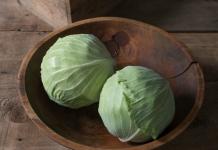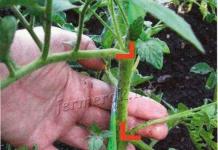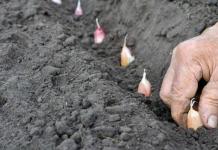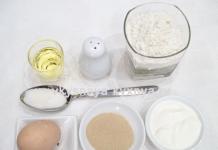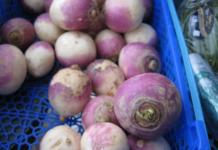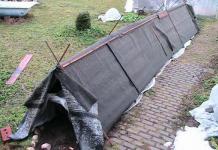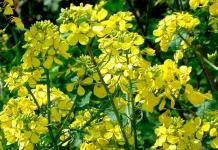Instructions
Inappropriate growing conditions. Watering cucumbers should be done quite often. This is a moisture-loving plant. Lack of moisture affects the appearance of yellow ovary and leaves. Watering is best done in the early hours or late at night every day if the weather is dry enough. Wood ash and urea feed will provide the cucumbers with potassium and nitrogen. Useful substances are contained in cow, chicken droppings, so root feeding should be done at the slightest sign of deficiency.
If the ovaries of cucumbers turn yellow, then, most likely, they remain non-pollinated. Often insects do not have the opportunity to pollinate the ovary, and it turns yellow and falls off. Only pollinated plants yield yields. To do this, it is necessary to provide insects with access to the ovaries in a confined space (if it is a greenhouse or greenhouse), and if this is not possible, then manually pollinate. The best solution would be self-pollinating varieties, hybrids.
Sharp temperature drops may well be the reason why the cucumber ovaries turn yellow and the yield decreases. The reason lies in the ability of cucumber roots to absorb nutrients only at temperatures above 10 ° C. At low temperatures, the ability is minimized, and the ovaries begin to lose nutrients and turn yellow. Such drops contribute to the development of fungal diseases of cucumber roots and their massive defeat. In this case, only root feeding can save.
What to do if cucumber ovaries turn yellow, although the temperature is quite acceptable, and watering is timely. It is possible that the reason for all this is the scorching sun. You need to plant cucumbers in a shaded area. The bright sun can burn through the leaf and ovary, especially if water gets on them during watering. Therefore, it should be watered only at the root, avoiding contact with the ovaries.
Able to infect cucumbers and bacteriosis. Too high humidity of the mail can lead to damage, therefore, if bacteriosis is detected, the plant should be sprayed with Bordeaux solution.
A large number of ovaries can also lead to yellowing. After all, a large number of ovaries consume much more nutrients. Therefore, on one liana, their number should not exceed 30. Correct and timely care of the crop will allow you to get a high yield of cucumbers.
Even a novice gardener can grow a fairly bountiful harvest of cucumbers, because cucumbers are not a very capricious culture, they do not require much attention. However, if some growing conditions are violated, this can negatively affect the fruits, for example, they can begin to turn yellow.
Why do cucumber embryos turn yellow in a greenhouse
In most cases, the embryos of cucumbers in the greenhouse begin to turn yellow due to a violation of the thermal regime, when the ambient temperature is either too low or too high. If cucumbers are grown in open ground, then yellowing occurs precisely because of the low temperature, when growing crops in a greenhouse - because of the high. It is worth noting that cucumbers are a thermophilic culture, its ovaries can turn yellow and fall off at temperatures below 15 degrees Celsius (with a long stay in such conditions), in order to avoid such an ailment, every effort must be made so that the temperature does not fall below the indicated mark and does not fluctuate in night and day hours by more than 10 degrees.
Yellowing and falling off of the ovaries of greenhouse cucumbers is also a common ailment. The fact is that at temperatures above 32 degrees, pollen loses its former activity, the flowers simply do not pollinate. Another reason for non-pollination of flowers in the greenhouse is incorrectly selected plant varieties. The fact is that bees rarely enter greenhouses, therefore, for growing plants in such structures, self-pollinating hybrids should be preferred.
Improper watering can also adversely affect the development of ovaries. The use of excessively cold water for irrigation can provoke the development of only "male flowers" in cucumbers, while female ovaries will simply fall off. The time of watering is also important, for example, on cool days it is undesirable to spend it in the mornings and evenings, the optimal time is the day, on hot and sunny days, on the contrary, watering during the daytime will negatively affect the development of plants, in this case, watering must be carried out either before nine in the morning, or after 6 pm.
Ovaries on cucumbers can also turn yellow due to a lack of trace elements. Most often, gardeners use nitrogen and potash fertilizers for top dressing, thinking that this is enough for the normal development of the culture. However, it is not. The lack of a sufficient amount of boron, zinc, copper and other things in the soil will inevitably lead to yellowing, and in the future, dropping of the ovaries.
Bacteriosis is a disease that quite often attacks cucumbers, and it is with this disease that the embryos of the culture turn yellow. The disease manifests itself as follows: small yellowish ulcers appear on the ovaries, after a short period of time the embryos rot and fall off.
Why do the embryos of cucumbers turn yellow in the greenhouse and
First of all, you need to find out the reason why the ovaries turn yellow, and then eliminate it. If yellowing occurs due to a violation of the thermal regime, then it must be adjusted: when growing cucumbers in open ground, cover the culture with special materials at night, when growing in a greenhouse, close the vents and doors of the structure at night, and do not forget to ventilate it for days.
If cucumbers of a non-self-pollinating variety are planted in the greenhouse, then in this case it is imperative to take care of attracting bees to the greenhouse or to contribute to the pollination of female ovaries by ourselves. The easiest way is to pick several male flowers and gently rub the female flowers with them.
If the reason for the yellowing of the embryos is improper watering, then you need to adjust it: water the plants daily, with warm water and only at the root. If the weather is cool, and the soil in the greenhouse is moist, then it is advisable to reduce the irrigation regime.
With a lack of trace elements, as it is not difficult to guess, it is necessary to feed the plants. For top dressing, you can use both purchased complex fertilizers and homemade ones based on weeds and ash.
If the cucumbers are infected with bacteriosis, then it is enough to treat the culture with either 1% Bordeaux liquid, or any other fungicide, for example, "Quadris", "Topaz", "Alett", etc. And to prevent this disease, before planting you need carry out a set of measures against fungal infections.
Perhaps there are no gardeners who would not at least once have encountered rotting cucumbers in their area. After all, even compliance with special care and conditions of detention is not always enough for cucumbers to avoid fungal diseases.

In general, cucumbers are plants that are particularly susceptible to fungal diseases. The fact is that cucumbers love high humidity, and, as you know, fungi develop in a humid environment, so it is not at all surprising that this culture is often sick. If you keep plants in a drier climate, then you can not hope for a good harvest, so there is nothing left but to maintain the necessary humidity of the air and soil in the greenhouse and carefully monitor the seedlings, and when the first signs of fungus appear, take action. Cucumbers are susceptible to many types of rot, for example, root, basal, gray, white, and so on, but in this article we will analyze the types due to which the fruits suffer in the first place. So, the vegetables themselves are most often prone to gray and white rot.
Gray rot
The causative agent of gray rot is a fungus called Botrytis cinerea, it develops due to high humidity and low temperature conditions. The first signs of gray mold are:
- the appearance on the leaves of a gray bloom;
- the appearance of black specks on the leaves;
- cessation of the formation of ovaries;
- the formation of a large number of barren flowers;
- decay of barren flowers;
- death of plants.
If you take timely measures against gray rot, namely, normalize the temperature regime (reduce temperature drops) and reduce air humidity, then the gray rot will recede.
White rot
The reasons for the formation of this fungus (Sclerotinia sclerotiorum) are high humidity (85-95%) and temperature drops, therefore, the elimination of these unfavorable factors is the main step towards the recovery of seedlings. Signs of white rot are:
- softening of the fruits of plants and their stems;
- the formation of white spots on leaves and fruits;
- watery shoots;
- termination of the formation of ovaries.
To get rid of this fungus, it is not enough just to revise the care (airing, feeding, removing diseased seedlings, etc.), you cannot do without treating the plants with special preparations. If the disease is at the initial stage, then folk remedies can be used to treat the seedlings, for example, milk whey, but if the fungus has absorbed a large area of the greenhouse, then it is better to give preference to specialized drugs like Oksikhom, Topaz, Rovralya.





